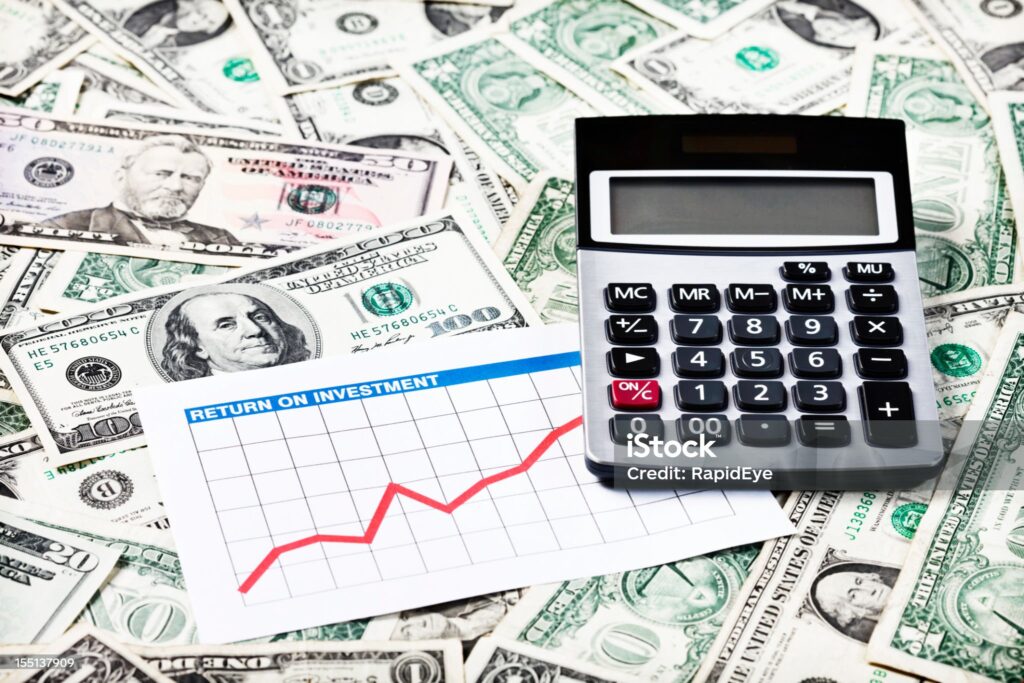Hey there, my friend! Picture this: we’re sitting at our favorite café, sipping on cappuccinos, and you lean in to ask me, “So, Yourmoneymatters, tell me honestly—what’s better, a 40% return or a 30% one?”
Now, at first glance, your instinct probably shouts, “40% of course!” But here’s where finance gets a little tricky. In the real world of investments, numbers don’t always tell the whole story. It’s not just about the return percentage flashing on paper—it’s about the risk you’re taking to get there. And that’s exactly why today we’re talking about evaluating investment returns beyond numbers and risks in finance.
Because let’s be real—haven’t you ever felt that rush of excitement seeing “high return” promises, only to later wonder what you’re signing up for? Yeah, I’ve been there too.

Understanding Investment Returns in Relation to Risk
So, let’s break it down. Imagine two options on the table:
- Option 1: A fund promises you 30% return but comes with high volatility—you’re constantly checking your phone, biting your nails, and praying the markets don’t nosedive.
- Option 2: Another fund quietly delivers 20% return, but with moderate ups and downs—you can sleep at night without panicking.
Now tell me, which one feels better? Exactly! Sometimes the so-called “lower return” is actually the smarter bet. Why? Because what really matters is how much risk per unit of return you’re taking. In finance, that’s like asking: “Am I working too hard for too little?”
Think of it as climbing a mango tree for $2,000 versus leaping between skyscraper terraces for $5,000. Sure, the terrace jump looks rewarding, but is it really worth the heart-stopping risk?
Calculating Real Return: The Game-Changer in Finance
Here’s where a nifty little trick comes in handy: calculating the Real Return.
The formula is simple:
Real Return = Absolute Return ÷ Risk Taken
Let me give you a quick personal story. A few years ago, I got lured into a mid-cap equity fund that promised stellar returns—on paper it showed a whopping 35% growth one year. But every time the market sneezed, my portfolio caught pneumonia. The stress wasn’t worth it.
When I applied the real return formula, guess what? A balanced fund with 18% returns actually outperformed the mid-cap on a risk-adjusted basis. That was my wake-up call.
Does that make sense? It’s like saying, “Sure, running a marathon barefoot gives bragging rights, but running in good shoes helps you finish stronger.”
Risk Management: The Heartbeat of Investment Decisions
Let’s face it—2025 markets aren’t the same as they were a decade ago. We’ve got everything from AI-driven robo-advisors to ETFs focusing on renewable energy, and the risk landscape has shifted.
- Balanced mutual funds might look boring at first glance, but they cushion you when markets turn volatile.
- High-risk equity plays can be exciting, but they’re like riding a rollercoaster with no seatbelt—you’d better have nerves of steel.
I always tell my friends this: don’t confuse excitement with smart investing. Just because your cousin’s crypto token doubled in three weeks doesn’t mean it’s a solid financial plan.
Risk management is like wearing a helmet when you’re biking. It doesn’t guarantee you’ll never fall—but it sure softens the impact when you do.
Real-Life Analogy: Everyday Choices and Returns
Sometimes, the simplest analogies hit home the hardest. Think of it like food choices.
- Eating street food pani puri every evening might give you instant joy (high return, high risk—hello stomach upset).
- Cooking dal-chawal at home may not thrill you as much (moderate return), but it’s stable, healthy, and sustainable.
Investments work the same way. It’s not always about chasing the spiciest, flashiest option—it’s about staying consistent and protecting your long-term health (or in this case, wealth).
What If Banks Offered 12–15% Assured Returns?
Here’s a fun scenario: imagine tomorrow, RBI allowed banks to offer 12–15% assured returns on deposits. Do you think people would still rush toward equity markets? Nope. Investors would flock to these deposits because they’d suddenly offer a juicy return without sleepless nights.
And honestly, that’s the crux of evaluating investment returns beyond numbers and risks in finance—understanding not just what you could make, but how safely you can make it.
Current Trends in 2025: How Risk and Return Are Evolving
To keep this timely, let’s talk about what’s happening now:
- AI-powered risk analysis tools are helping retail investors (like you and me) visualize risk better than ever before. Apps now show stress tests of how your portfolio reacts if markets fall 20%.
- Green finance and ESG funds are trending. Returns might look smaller, but they’re proving to be more stable and future-proof.
- RBI’s tighter regulations on small-cap and penny stock disclosures are forcing investors to think beyond shiny returns and focus on sustainability.
All of these point to one truth: today, more than ever, risk and return are two sides of the same coin—you can’t ignore one for the other.
So, How Do You Evaluate Returns Smartly?
Here’s my go-to checklist when evaluating investments:
- Look at the absolute return, but don’t stop there. Always ask: what’s the risk behind it?
- Apply the real return formula. A steady 15% with moderate risk might beat a flashy 35% with stomach-churning volatility.
- Check historical consistency. Has the fund delivered steadily, or is it just having a lucky year?
- See if it aligns with your goals. Saving for a down payment in 3 years is different from planning retirement 30 years away.
Let’s Wrap This Up
So, my friend, next time someone tells you, “This stock gave me 40% returns,” don’t just nod in awe. Ask them, “At what risk?” Because in the world of finance, true wisdom lies in looking beyond the numbers.
The real secret sauce? Evaluating investment returns beyond numbers and risks in finance means protecting your peace of mind while growing your wealth. Trust me, no return is worth sleepless nights.
Now, I’d love to hear from you—how do you judge an investment? Do you go by the highest return on paper, or do you factor in the bumps along the road? Drop your thoughts below, let’s make this a conversation.
Stay tuned—Yourmoneymatters will be back with more stories, lessons, and practical takes on navigating the ever-evolving world of money.

